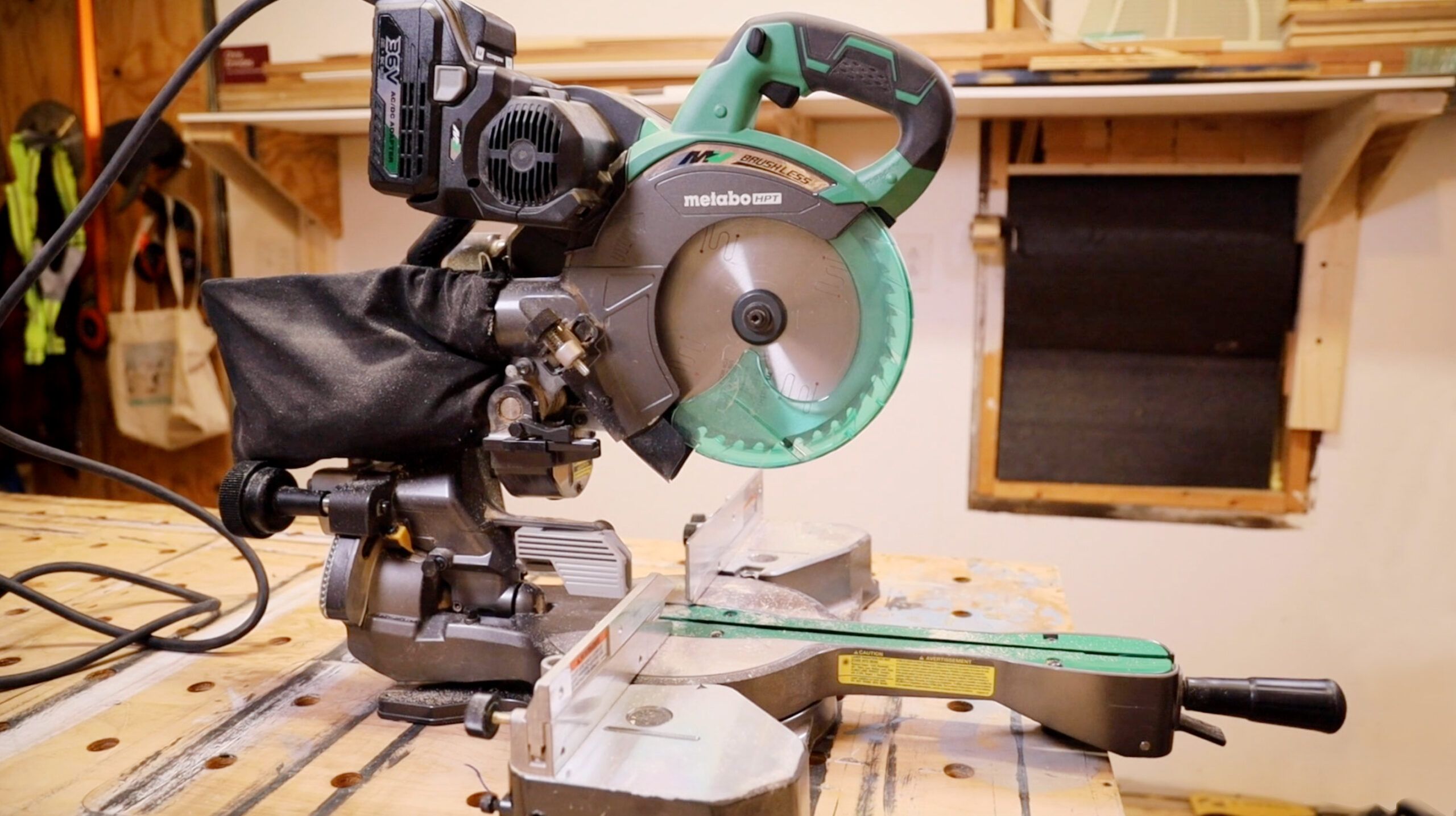Miter saws—a.k.a. “chop saws”—are indispensable power tools for a wide variety of woodworking and trim-carpentry tasks, like trimming out windows and doors, installing baseboards, and crown molding, hanging siding, and building decks and stairs. But their fixed heads limit the width of the stock they can cut.
What is a Sliding Compound-Miter Saw?
Sliding compound-miter saws will work just like chop saws, but because their blades move back and forth on horizontal rails, they also can slice stock up to 15 inches wide in one stroke.
“If you’re going to buy just one miter saw, make it a sliding compound-miter type; it can handle a wider range of stock.” —Chris Ermides, TOH editor
In the years since Hitachi first introduced theirs in 1988, these sliding-head saws have undergone numerous refinements and upgrades, and now, with the availability of cordless versions, they’re even more useful for home-remodeling projects.
Here’s the latest on this special class of tools.
What to Look For in a Sliding Compound-Miter Saw
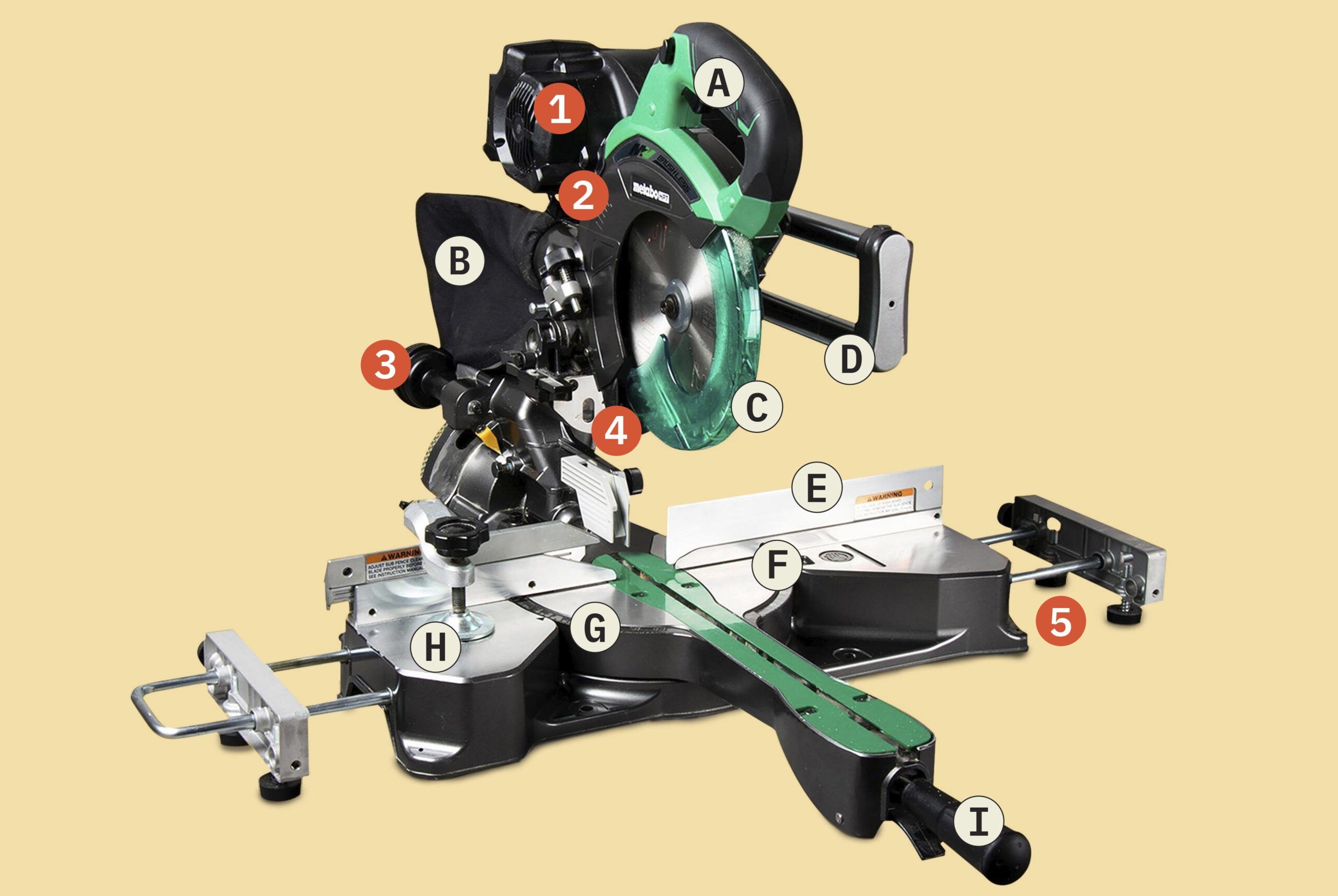
- A. Trigger switch
- B. Dust collection bag
- C. Auto-retracting blade guard
- D. Guide rails
- E. Fence
- F. Miter scale
- G. Miter table
- H. Hold-down clamp
- I. Miter lock with detent override
Helpful upgrades
- 1. Soft-start motor with electric brake
- 2. Built-in LED
- 3. Bevel adjustment knob
- 4. Laser cutline indicator
- 5. Extension supports
Shown: MultiVolt 36V Dual-Bevel Sliding-Miter Saw C3607DRA
- Weight: 34 poundsBlade: 7 ¼” ATB carbide
- Cutline: LaserMiters: 57° right, 45° left
- Bevels: 45° left and right Max. crosscut: 12 13/64″
- Max. vertical cut: 2 9/32″
- Motor: Brushless DC; operates with either a cord or a 36V 4.0 Ah battery (not included)
- RPM: 4,000
- Price: $1,249; Metabo HPT
Types of Miter Saws to Consider
Most Portable
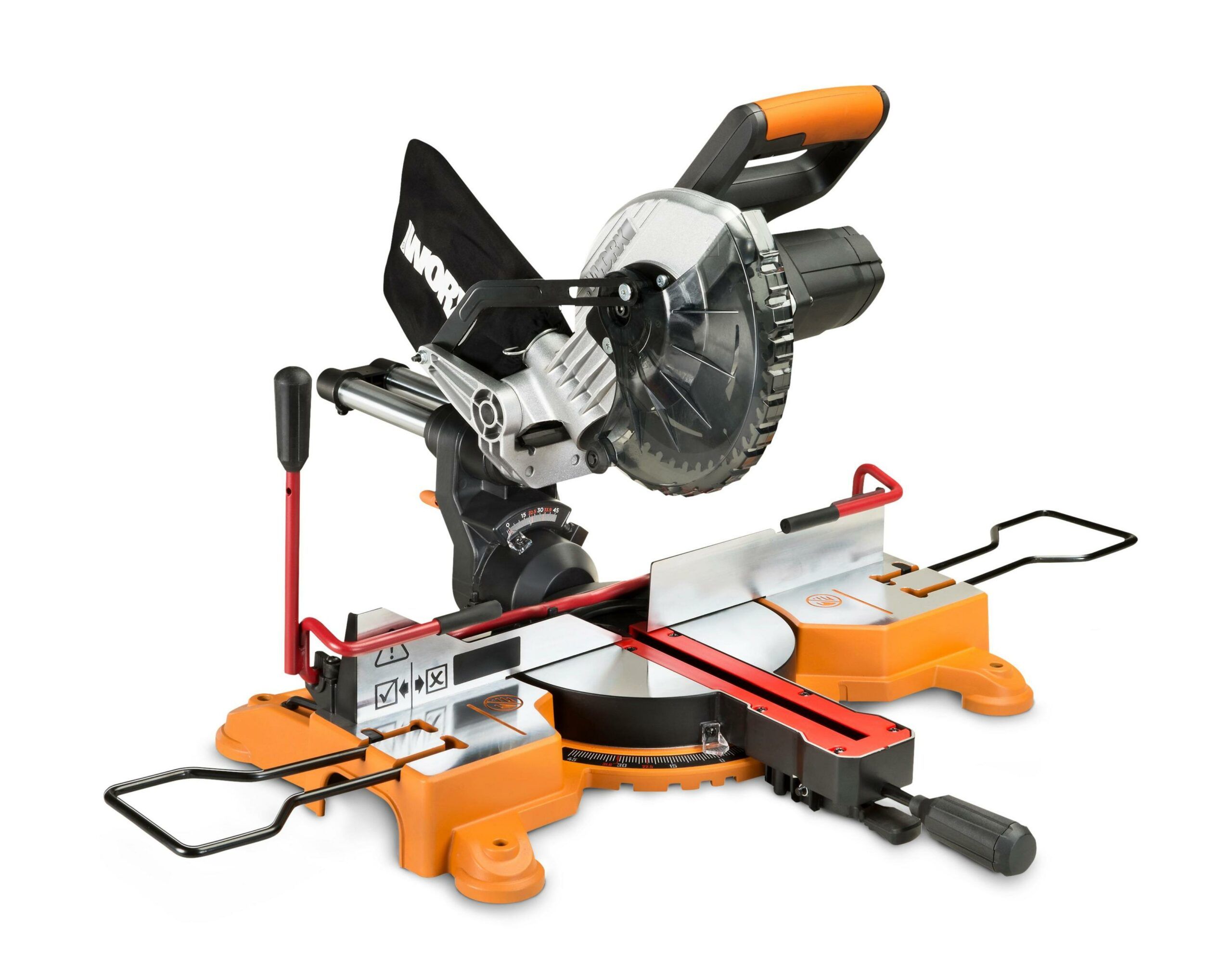
Compact (71/4-, 71/2-, or 81/2-inch blades)
The takeaway: Relatively lightweight and easy to carry, these saws don’t need a lot of working room and don’t take up a lot of storage space. They’ll cut boards up to a 2×8, but their vertical cutting capacity is limited: They can’t cut most crown when nested (see p. 101) or baseboards standing on edge. Blade options are also limited, and there are fewer cordless offerings. With motor power typically in the 10- to 12-amp range, they can bog down in dense or wet wood.
Shown: Worx 20V Power Share Sliding Compound Miter Saw WX845L
- Weight: 21 poundsBlade: 7 ¼” carbide tipped
- Cutline: Blade shadow
- Miters: 47° left and right
- Bevels: 45° left
- Max. crosscut: 8 ¾”
- Max. vertical cut: 2¼ ”
- Motor/RPM: Brushless DC/ 3,600
- Battery: 20V 4.0 Ah lithium-ion (not included)
- Price: $230; Worx
Most Versatile
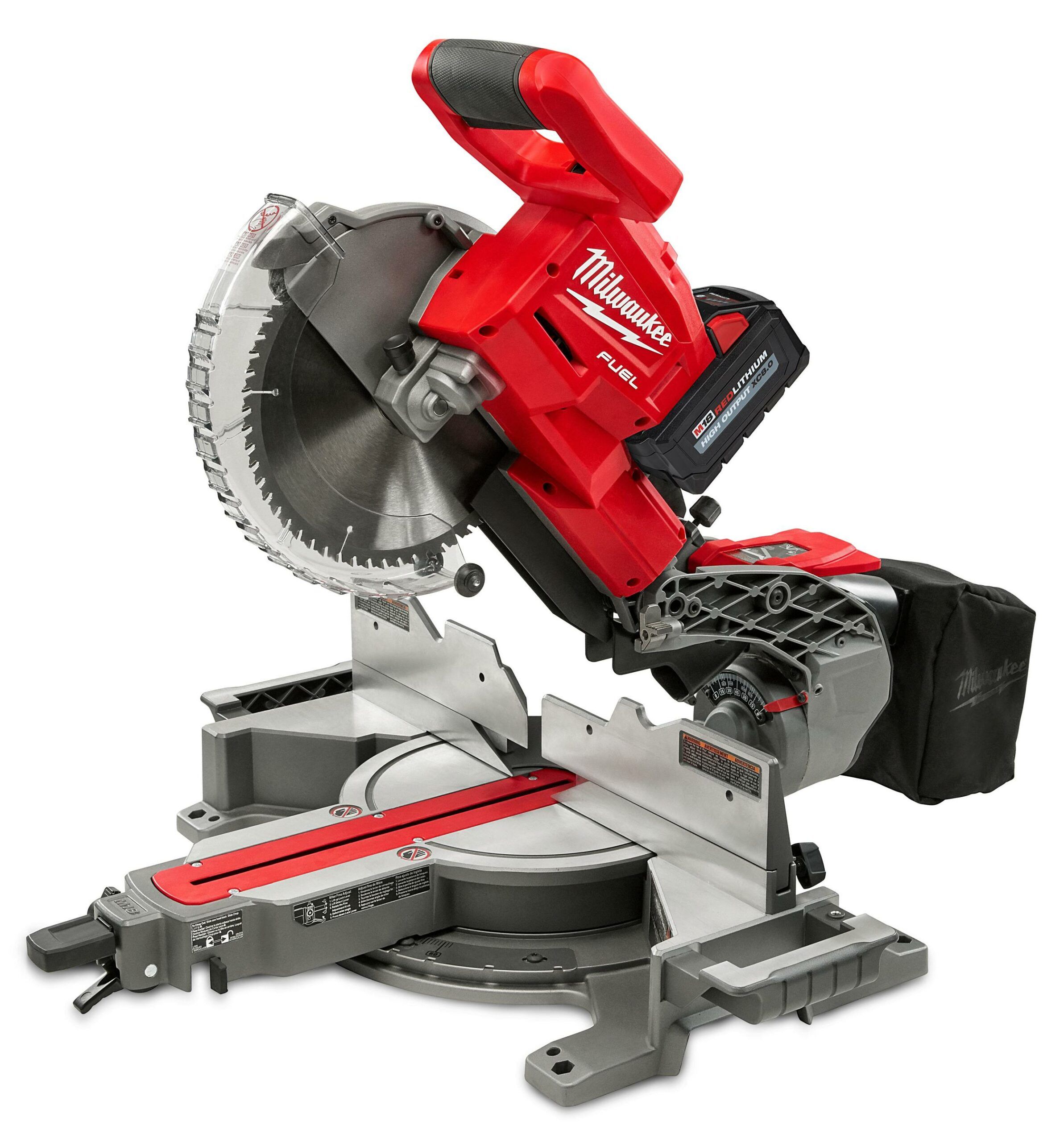
10-inch
The takeaway: Their larger blades allow you to crosscut stock up to a 2×12, and have enough vertical capacity to cut common trim sizes, both standing up and nested, or to slice through a 4×4 in one pass. Cutting power isn’t a problem; even a pressure-treated post won’t slow them down.
A wide selection of models are available in this size, including cordless options, along with different blade styles and price points. But a bigger size means extra weight and a bigger footprint; they’re best used on a stand or benchtop.
Shown: Milwaukee M18 Fuel Dual-Bevel Sliding Compound Miter Saw R4210
- Weight: 48 pounds
- Blade: 10″ carbide tipped
- Cutline: Blade shadow
- Miters: 50° left, 70° right
- Bevels: 48° left and right
- Max. crosscut: 11 ¼”
- Max. vertical cut: 5 ¾”
- Motor/RPM: Brushless DC/4,000
- Battery: 18V 9.0 Ah lithium-ion (not included)
- Price: $499; Milwaukee Tool
Pack Lots of Power
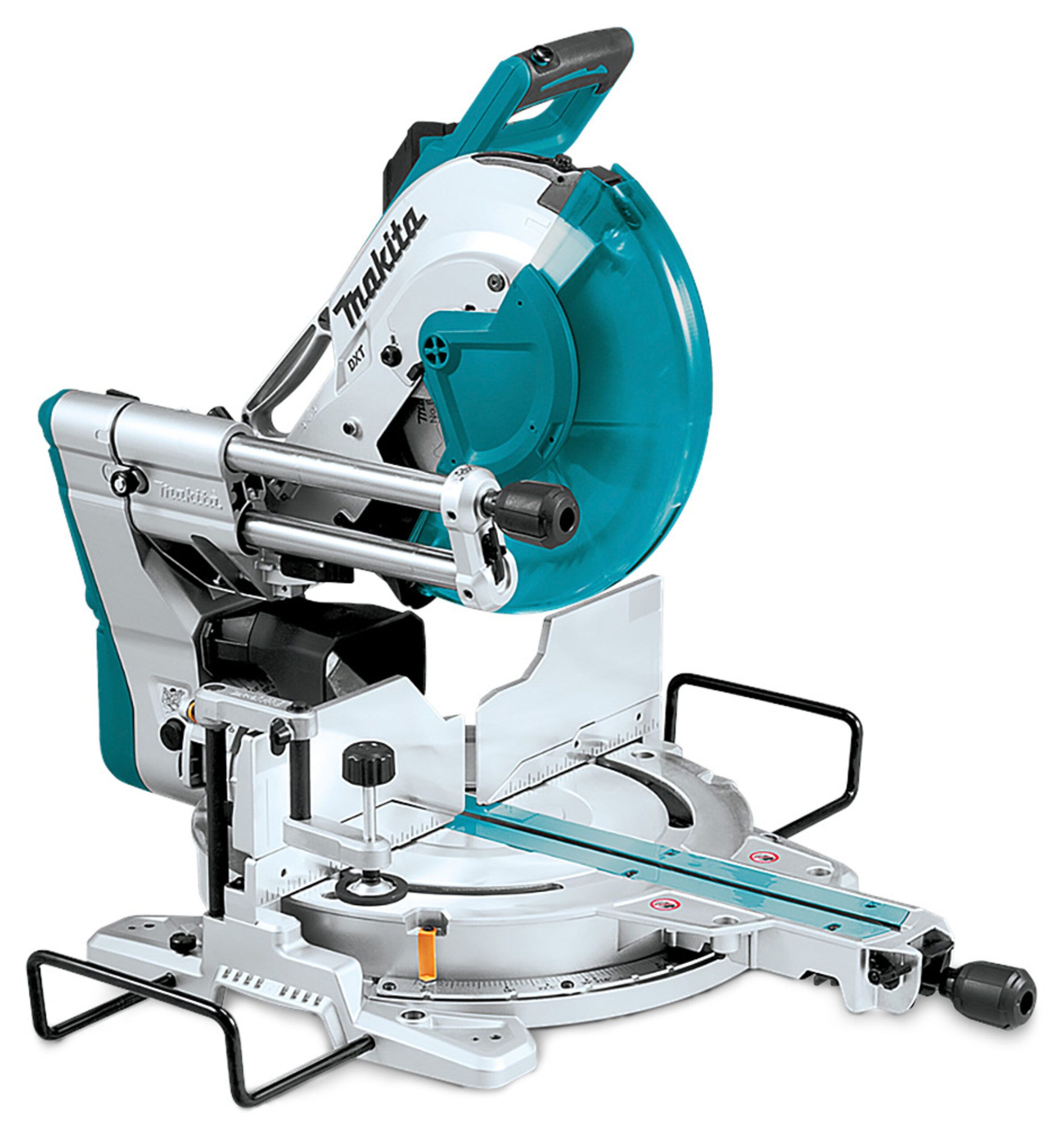
12-inch
The takeaway: These saws offer the largest cutting capacity, both vertically and horizontally; they can saw through a 6×6 in one pass, and just about any crown (in a nested position) or base molding (stood on edge). They’re also the most powerful saws of the bunch, and the most expensive. Park them on a bench and leave them there; they’re heavy and difficult to carry. There aren’t many cordless options in this size, as of yet.
Shown: Makita Dual-Bevel Sliding Compound Miter Saw LS 1219L
- Weight: 65 pounds
- Blade: 12″ carbide tipped
- Cutline: Laser Miters: 60° left and right
- Bevels: 48° left and right
- Max. crosscut: 15″
- Max. vertical cut: 6 ¾”
- Motor/RPM: 15 amp/3,200
- Price: $749; Makita
What to Look For in a Blade
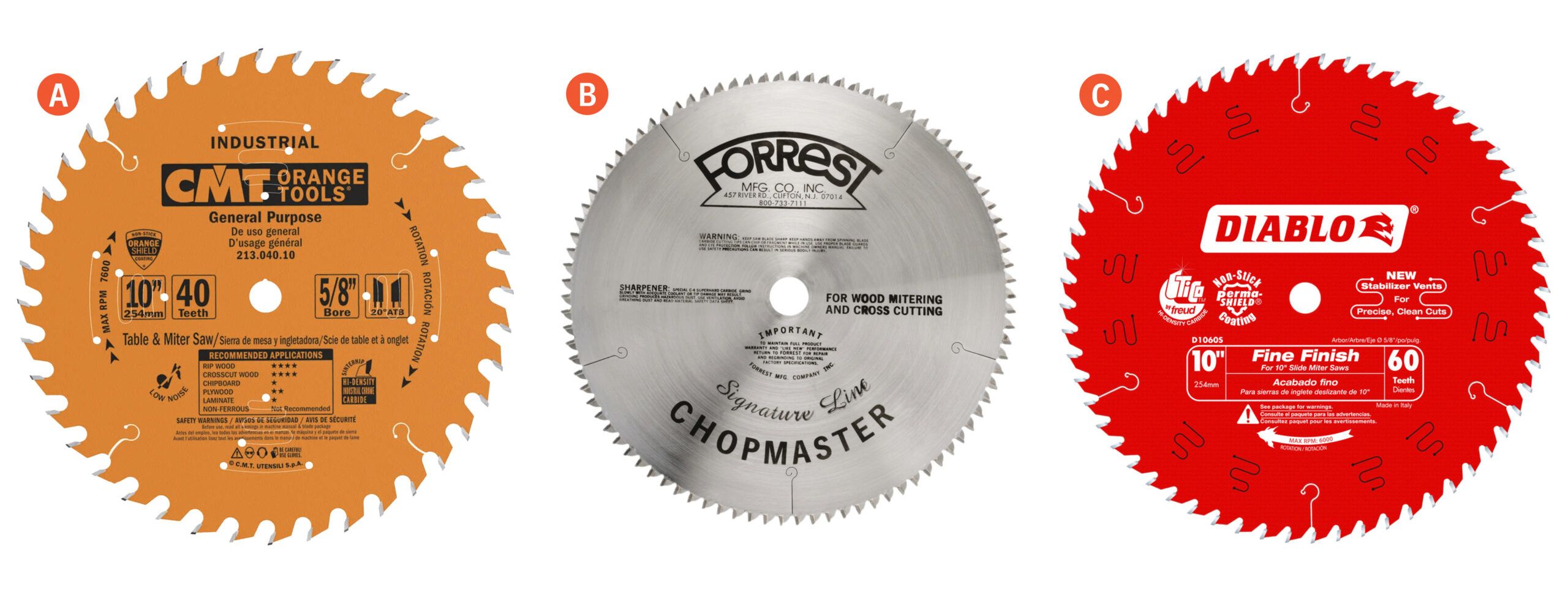
- Tooth count: For fine finish work, where smooth cuts are a must, use a blade with 60 to 90 teeth. But when cutting lumber, the job will go much faster with a 40- or 50-tooth combination blade.
- Tooth hook angle: Minus 5 to 7 is the typical range for these saws.
- Tooth geometry: Look for carbide teeth ground with an Alternate Top Bevel (ATB).
- Thickness: Thin-kerf blades, which cut slots about 3/32 inch wide, are universally used on cordless saws because they put less strain on motors. Their downside is that they can heat up, deflect, and vibrate more than the thicker, stiffer (and more expensive) full-kerf blades that cut ⅛-inch-wide slots. But those heavier blades need corded, 15-amp motors to spin them.
10-inch blade options
- A. 40-tooth ATB General Purpose blade 213.040.10, $60; CMT Orange Tools
- B. 90-tooth ATB+R ChopMaster Signature Line Fine Finish blade, from $195; Forrest
- C. 60-tooth ATB Fine Finish blade D1060S, $50; Diablo
